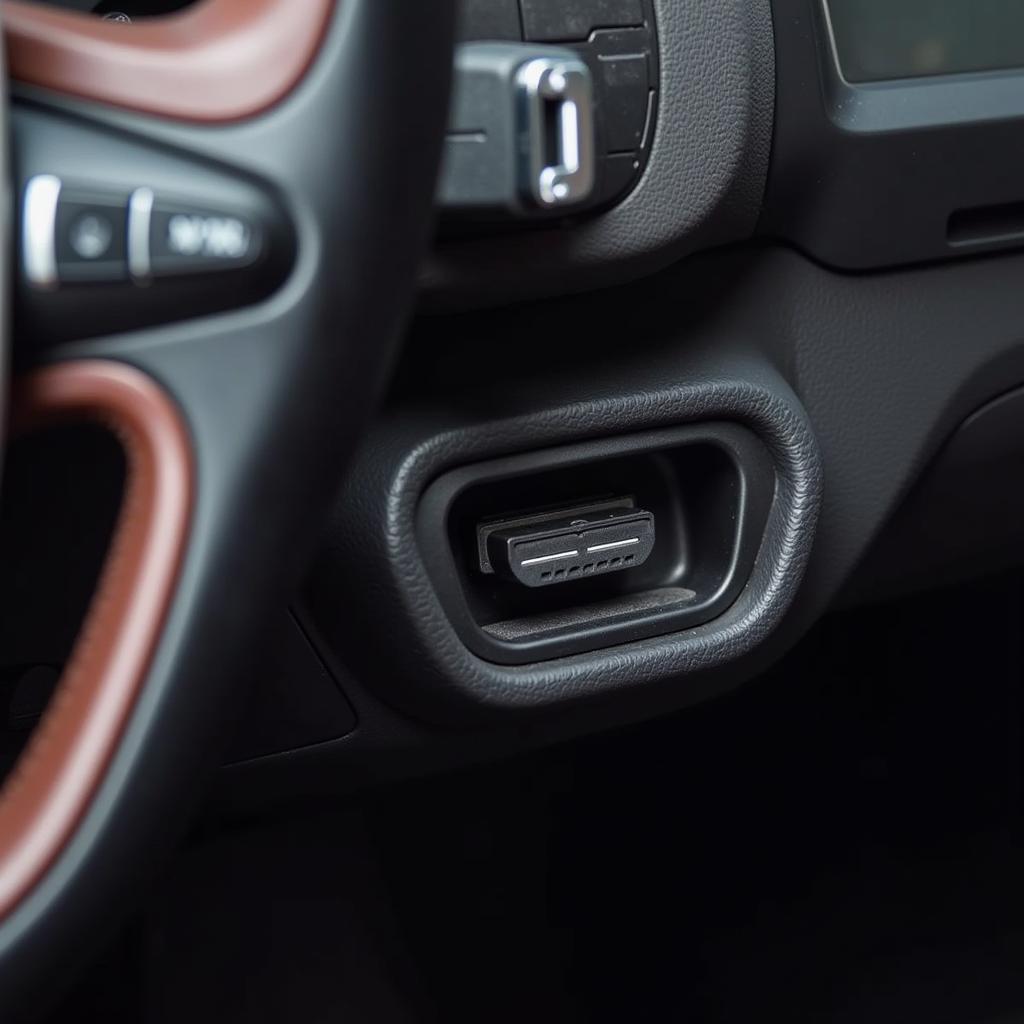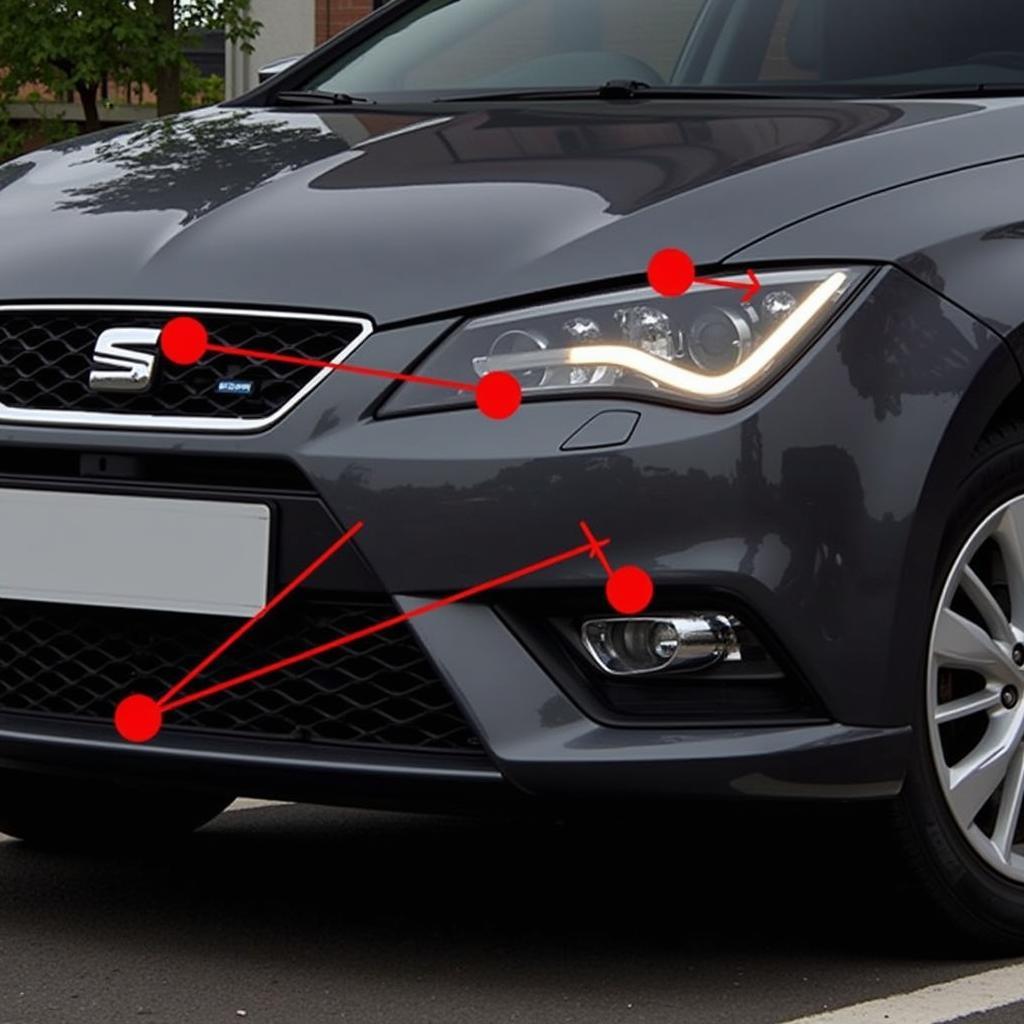The BMW i3, like all modern vehicles, is equipped with a brake pad wear sensor system that alerts you when the brake pads are nearing the end of their service life. This warning system manifests as a persistent yellow brake pad warning light on your dashboard. While this is a crucial safety feature, knowing how to reset the warning light after replacing your brake pads is essential.
This comprehensive guide will walk you through the process of resetting the brake pad warning light on your BMW i3. We’ll cover everything from understanding the warning system to step-by-step instructions for resetting it.
Understanding Your BMW i3 Brake Pad Warning System
The brake pad warning system in your BMW i3 relies on sensors embedded within the brake pads themselves. These sensors are strategically placed to monitor the thickness of the brake pad material. As you use your brakes, the brake pad material wears down. Once the material reaches a predetermined minimum thickness, the sensor triggers the warning light on your dashboard.
Important Note: Ignoring the brake pad warning light can lead to further damage to your braking system and compromise your safety. It’s crucial to address the issue promptly by inspecting and, if necessary, replacing your brake pads.
When to Reset the Brake Pad Warning Light
The brake pad warning light should be reset only after you have replaced your brake pads. Simply resetting the light without replacing worn brake pads will not solve the underlying issue and could be dangerous.
Here are instances when resetting the brake pad warning light is necessary:
- After replacing your brake pads: This is the most common scenario.
- After replacing a faulty brake pad wear sensor: If the warning light is on, but your brake pads have sufficient material, the sensor itself might be faulty and require replacement.
How to Reset the BMW i3 Brake Pad Warning Light
Resetting the brake pad warning light on your BMW i3 does not necessarily require specialized tools or diagnostic equipment. In many cases, you can reset the light manually. However, for more complex situations, you might need a professional-grade diagnostic tool.
Let’s explore both methods:
Method 1: Manual Reset
This method involves manipulating the vehicle’s electronics to reset the warning light. Here’s how it’s done:
- Ensure the ignition is off.
- Locate the brake pedal.
- Press and hold the brake pedal firmly.
- While holding the brake pedal, turn the ignition on. Do not start the engine.
- Continue holding the brake pedal for approximately 30 seconds. You should see the brake pad warning light flash or flicker, indicating that the reset process is underway.
- Release the brake pedal.
- Turn the ignition off.
- Wait a few moments and then start the engine to confirm the warning light is reset.
Note: The manual reset method might not work for all BMW i3 models or model years. If this method doesn’t work for you, proceed to the next method.
Method 2: Resetting with a Diagnostic Tool
A professional-grade diagnostic tool, specifically designed for BMW vehicles, allows you to interact with the vehicle’s computer system directly. This method is generally more reliable and offers a wider range of diagnostic and reset capabilities.
Here’s a general outline of the process:
- Connect the diagnostic tool to your BMW i3’s OBD-II port. This port is typically located under the dashboard on the driver’s side.
- Turn on the ignition. Do not start the engine.
- Access the brake system module using the diagnostic tool.
- Select the option to reset the brake pad warning light. The specific menu options and wording may vary depending on the diagnostic tool you’re using.
- Follow the on-screen prompts to complete the reset process.
- Once the reset is successful, disconnect the diagnostic tool and start the engine to confirm the warning light is off.
 BMW i3 OBD-II Port Location
BMW i3 OBD-II Port Location
Expert Insight:
“Using a professional-grade diagnostic tool is becoming increasingly necessary for modern vehicles like the BMW i3,” says Tim Miller, a seasoned automotive electrical engineer with over 15 years of experience. “These tools offer a level of precision and functionality that manual methods simply can’t match.”
Tips for Maintaining Your BMW i3 Brakes
Proper brake maintenance is crucial for ensuring the longevity of your braking system and, most importantly, your safety.
Here are a few essential tips:
- Adhere to the recommended brake pad replacement intervals specified in your BMW i3 owner’s manual.
- Avoid aggressive driving habits such as hard braking, which can accelerate brake pad wear.
- Have your brake system inspected regularly by a qualified mechanic.
- Pay attention to any unusual noises, vibrations, or changes in braking performance.
FAQs – BMW i3 Brake Pad Warning Light Reset
1. Can I drive with the brake pad warning light on?
It’s highly discouraged to drive with the brake pad warning light illuminated. Driving with worn brake pads significantly reduces your braking efficiency and could lead to brake failure.
2. How long can I drive with the brake pad warning light on?
There’s no specific mileage or timeframe. It’s best to address the warning light immediately to avoid potential risks.
3. What could cause the brake pad warning light to come on prematurely?
A faulty brake pad wear sensor, damaged wiring, or even a low battery voltage can sometimes trigger the warning light prematurely.
4. Do I need to replace all four brake pads at the same time?
It’s generally recommended to replace brake pads in pairs (front axle or rear axle) to maintain balanced braking performance.
5. How often should I check my brake fluid?
It’s good practice to check your brake fluid level at least every other oil change.
6. Can I reset the brake pad warning light myself?
While you can attempt a manual reset, using a professional-grade diagnostic tool is often a more reliable method.
7. Why is my brake pad warning light still on after replacing the brake pads?
The warning light might require a manual or diagnostic reset after replacing the brake pads. Alternatively, there could be a separate issue, such as a faulty sensor.
 BMW i3 Brake System Inspection
BMW i3 Brake System Inspection
Conclusion
Resetting the brake pad warning light on your BMW i3 is a straightforward process, especially when equipped with the right knowledge. Remember, addressing the underlying issue of worn brake pads is crucial before resetting the warning light. By following the outlined steps and tips, you can ensure your BMW i3’s braking system remains in optimal condition, keeping you safe on the road.


